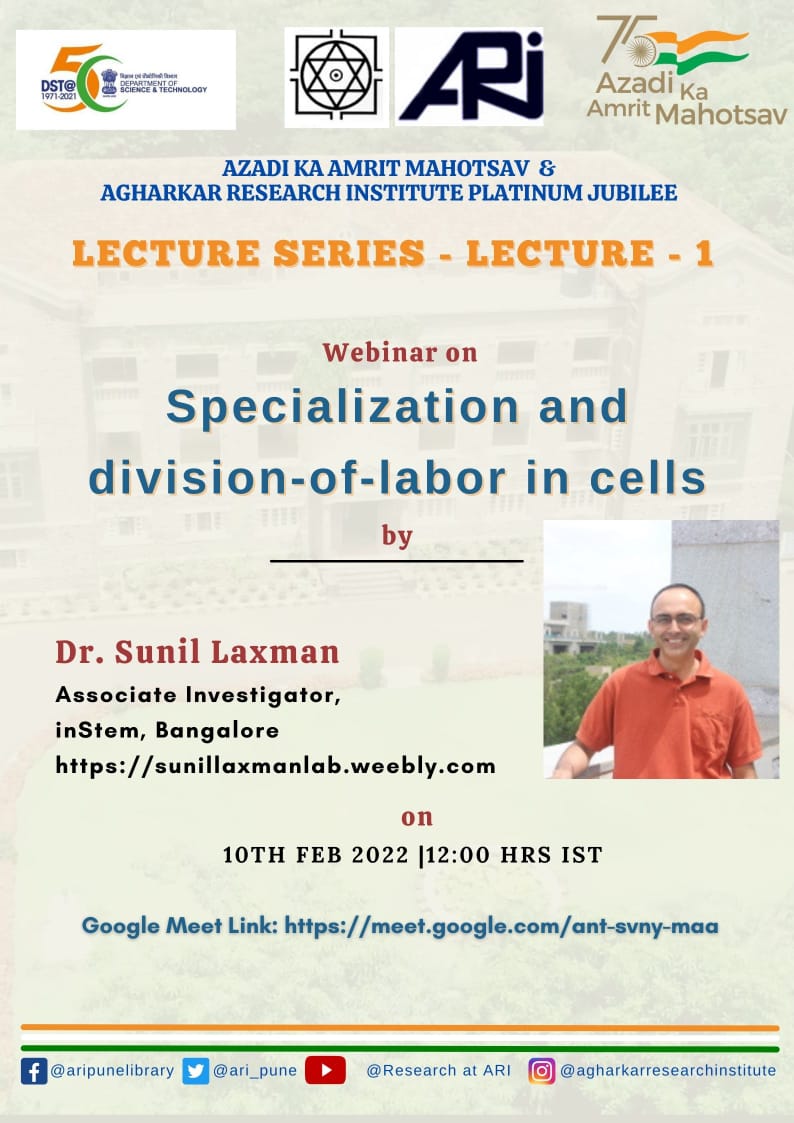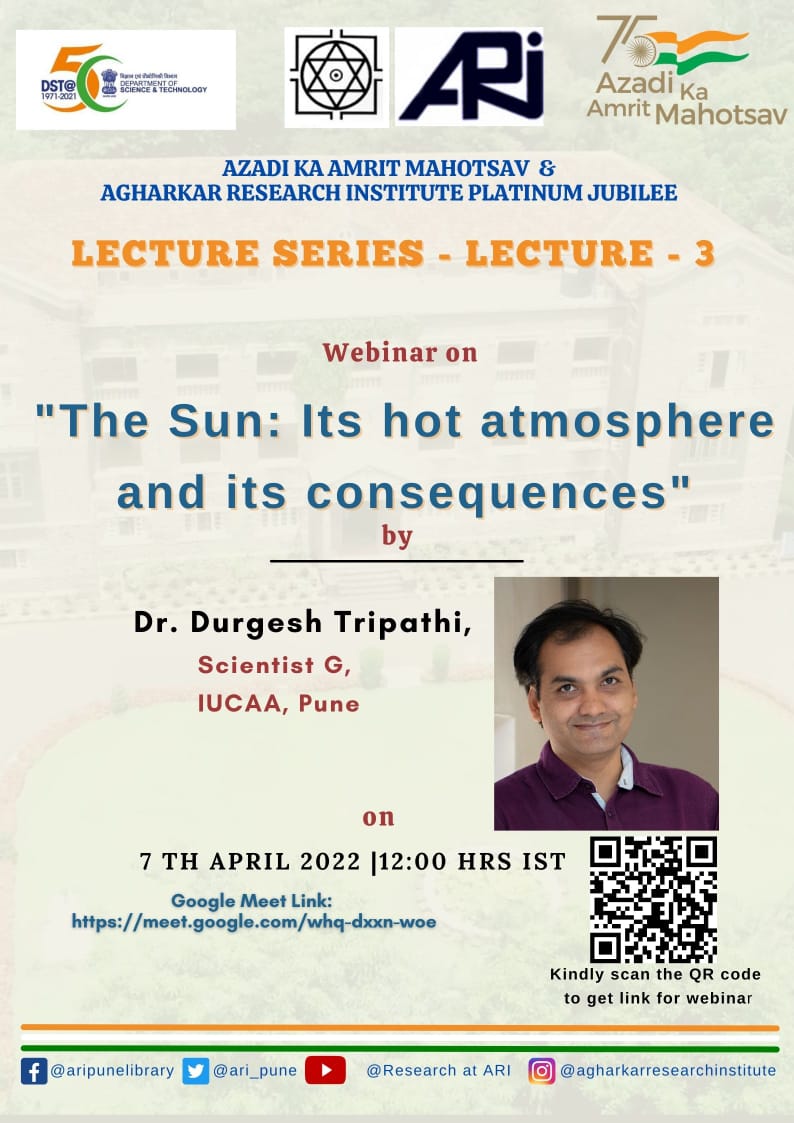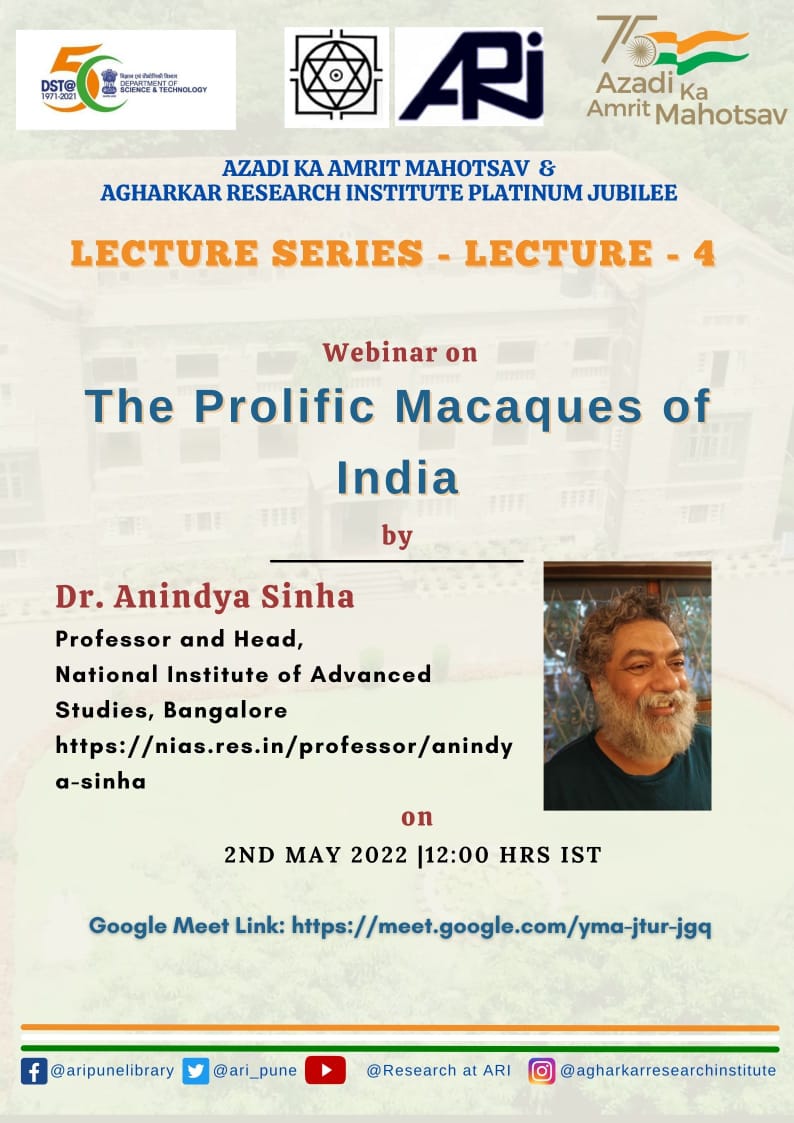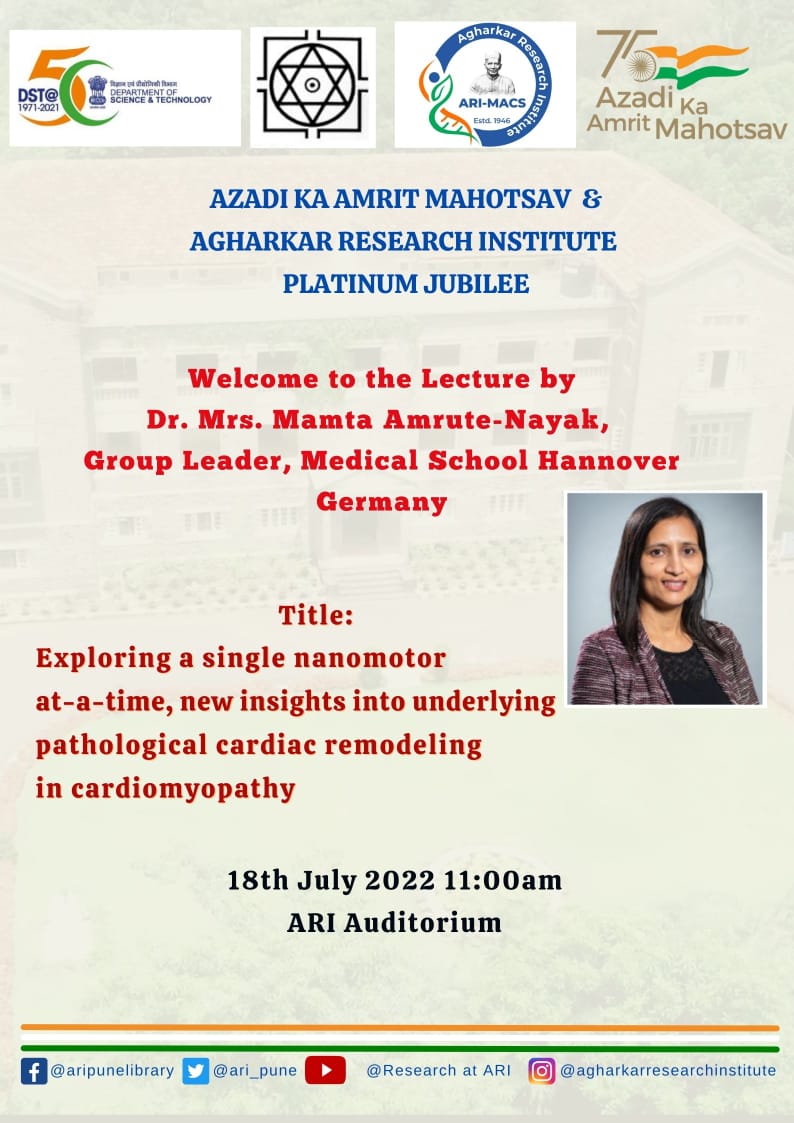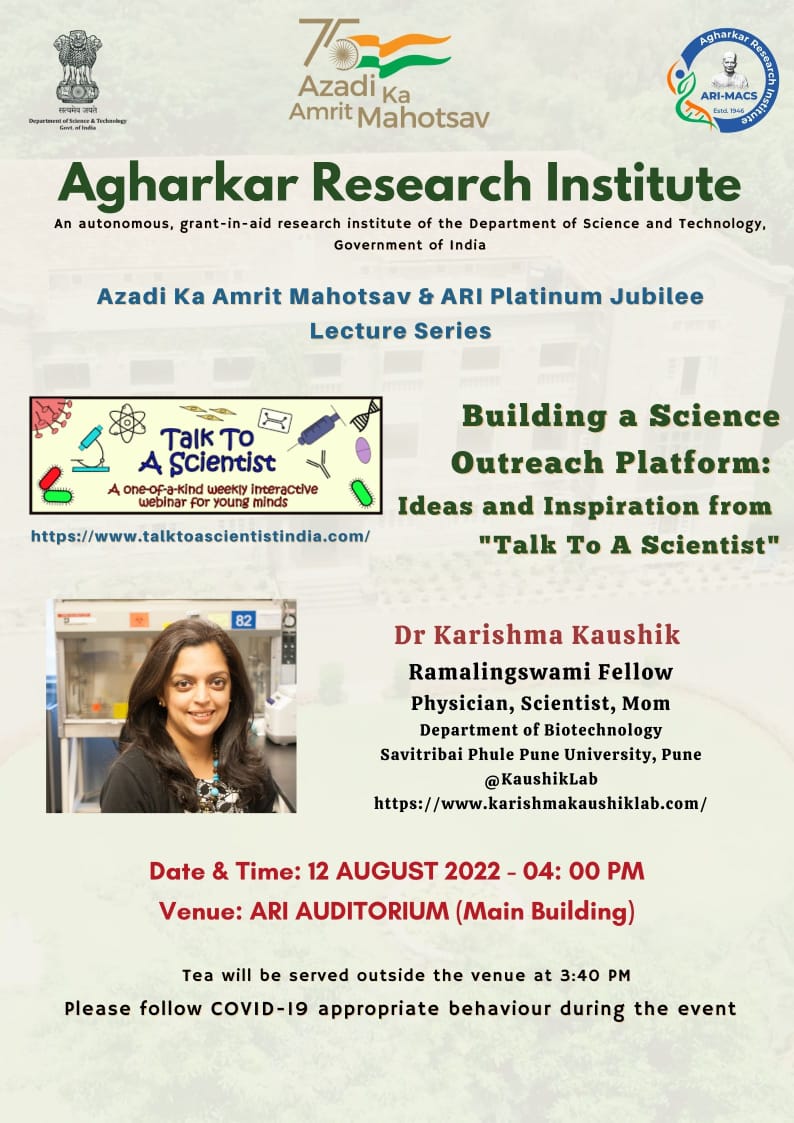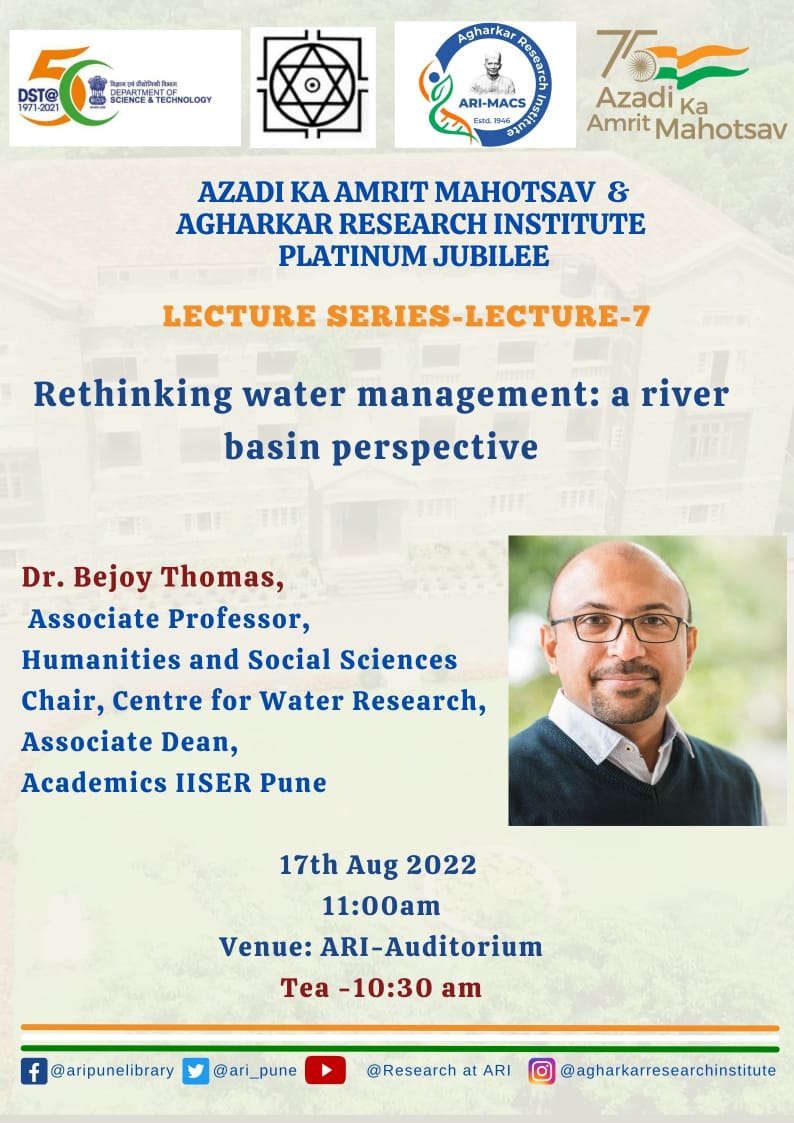
Google Scholar / Social Media
Name : Dr Abhinandan Surgonda Patil
Designation : Researcher (Ramalingaswami Re-entry Fellow)
Brief Background :
Dr Abhinandan S. Patil, working as Ramalingaswami Re-entry Fellow (Equivalent to Scientist D/ Assistant Professor) in the Department of Genetics and plant breeding at Agharkar research institute, Pune, His research focused on “Breeding for high-yielding elite soybean cultivars with climate/disease resilience and end-use quality traits by multi-parent hybridisation and genomic-assisted selection” (Sposered by-The Department of Biotechnology, Ministry of Science and Technology, Government of India). Previously, He worked internationally (for six years) with IRRI (Philippines), PGBI, CALS, SNU (South Korea), and the ARO-Volcani Center (Israel). He had an academic/professional research work experience in agricultural sciences, particularly in research and development related to improving the yield and component traits via field, molecular and transgenic plant breeding in soybean, rice, capsicum, peanut, castor, safflower, mustard, Desmodium, drumstick, chickpea, finger millet, mango, clementine, avocado, and wheat crops.
Contact Details :
apatil@aripune.org; agrilstar25@gmail.com
+91-8983546613
Research Gate : https://www.researchgate.net/profile/Abhinandan_Patil3
- Doctorate of Philosophy (PhD), Genetics and Plant Breeding, Junagadh Agricultural University, Junagadh, Dissertation: Crop Improvement Unit, ICAR-Directorate of Groundnut Research (ICAR-DGR), Junagadh, India
- Master of Science (MSc Agriculture), Plant Breeding and Genetics, Anand Agricultural University, Anand, India
- Post-Graduate Diploma In Intellectual Property Rights (PGDIPR), Indira Gandhi National Open University, New Delhi, India
- To develop the Multi-parent Advanced Generation Intercross (MAGIC) population in soybean. High-yielding, early maturity (<90-95 days) elite soybean cultivars with nutritionally enhanced quality traits (oil and protein) for wider agronomic adaptability through the integration of multi-parent hybridisation, speed breeding techniques, and genomic aided selections
- Targeted integration of practical and durable multiple disease resistance genes (haplotypes) in soybean cultivars to withstand fungal (Rust), bacterial (blight), and viral (mosaic) diseases
- Improvement of nutritional quality (Oleic acid/Soy isoflavone/Sucrose) of soybean by reducing anti-nutritional factors (Null LOX II/KTI-Kunitz trypsin inhibitor/Phytase) using molecular marker approaches to apt for end-use quality (Vegetable and Food grade soybean)
- To identify novel Marker Trait Associations (MTAs)/Multi-trait Quantitative Traits Loci (MT-QTL)/haplotypes and to study Genotype х Environment x Management (different crop management practices) (G x E x M) interactions for the targeted trait of interest including climate resilience traits like water-logging tolerance and long juvenility
Peer-Reviewed Research Articles
- Kapil Gupta, Shubhra Gupta, Adi Faigenboim-Doron, Abhinandan Surgonda Patil, Yael Levy, Ran Hovav (2021) Deep transcriptomic study reveals the role of cell wall biosynthesis and organization networks in the developing shell of peanut pod. BMC Plant Biology, 21, 509.
- Abate Mekonnen Solomon, Tae-Gun Kim, Koeun Han, Hea-young Lee, Abhinandan Patil, Muhammad Irfan Siddique, Jeonghwan Ahn, and Byoung-Cheorl Kang (2021) Fine mapping of the Capup locus controlling fruit orientation in pepper (Capsicum spp.). Frontiers in Plant Science, 12:675474.
- Hea-Young Lee, Na-Young Ro, Abhinandan Patil, Joung-Ho Lee, Jin-Kyung Kwon, and Byoung-Cheorl Kang (2020) Uncovering candidate genes controlling major fruit-related traits in pepper via genotype-by-sequencing based QTL mapping and genome-wide association study. Frontiers in Plant Science, 11:1100.
- Muhammad Irfan Siddique, Na-Young Ro, Hea-Young Lee, Koeun Han, Jelli Venkatesh, Solomon Abate Mekonnen, Abhinandan Surgonda Patil, Amornrat Changkwian, Jin-Kyung Kwon, Byoung-Cheorl Kang (2019) Identifying candidate genes for Phytophthora capsici resistance in pepper (Capsicum annuum) via genotyping-by-sequencing-based QTL mapping and genome-wide association study. Scientific Reports 9 (9962):1-15.
- Abhinandan S. Patil*, Dalia Maure*, Oleg Feygenberg and Noam Alkan (2019) Exploring cold quarantine for mango fruit against fruit fly using artificial ripening. Scientific Reports, 9 (1948):1-10.
- Abhinandan S. Patil, Sigal Popovsky, Yael Levy, Ye Chu, Josh Cleavenger, Peggy Ozias–Akins, and Ran Hovav (2018) Genetic insight and mapping of pod constriction trait in Virginia-type peanut. BMC Genetics, 19:93.
- Abhinandan S. Patil, Ilan Hedvat, Yael Levy, Shmuel Galili and Ran Hovav (2018) Genotype–by–environment effects on the performance of recombinant inbred lines of Virginia-type peanut. Euphytica, 214:83.
- Galya Kayam, Yael Brand, Adi Faigenboim–Doron, Abhinandan Patil, Ilan Hedvat, and Ran Hovav (2017) Fine–mapping the branching habit trait in cultivated peanut by combining bulked segregant analysis and high–throughput sequencing. Frontiers in Plant Science 8:467
- Abhinandan S. Patil, Radhakrishnan Thankappan, Reetu Mehta, Reena Yadav, Abhay Kumar, Gyan Prakash Mishra, Jentilal Ramjibhai Dobaria, P. P. Thirumalaisamy and R. K. Jain (2017) Evaluation of transgenic peanut plants encoding coat-protein and nucleocapsid-protein genes for resistance to Tobacco streak virus and Peanut bud necrosis virus. Journal of Environmental Biology, 38(2):187–196.
- A. A. Punewar, A. S. Patil$, H.R. Nandanwar, S. M. Patel and B. N. Patel (2017) Genetic dissection of heterosis and combining ability in castor (Ricinus communis L.) with Line × Tester analysis. Journal of Experimental Biology and Agricultural Sciences, 5(1):77–86.
- H. R. Nandanwar, P. Manivel, A. S. Patil, A. A. Punewar, and R. Saravanan (2017) Genetic diversity studies in Desmodium gangeticum (L.) DC. International Journal of Current Microbiology and Applied Sciences, 6(2):424–429.
- R. S. Choudhary, Nandkumar Kunchge and A. S. Patil (2015) RNAi Gene validation in mustard (Brassica juncea L.) using Agrobacterium-mediated transformation method. Multilogic in Science, V (XIII):124–131
- Chormule, S. R., Bhatiya V. J. and Patil, A. S. (2015) Effect of seed treatments on quality of chickpea (Cicer arietinum L.) AGRES – An International e-Journal, 4(1):65–71
- A. S. Patil$, A. A. Punewar, H. R. Nandanwar and K. P. Shah (2014) Estimation of variability parameters for yield and its component traits in groundnut (Arachis hypogaea L.). The Bioscan, 9(2):633–638.
- A. S. Patil$, H. R. Nandanwar, A. A. Punewar and K. P. Shah (2014). Stability for yield and its component traits in groundnut (Arachis hypogaea L.). International Journal of Bioresource and Stress Management, 5(2):240–245.
- M. G. Shinde, A. S. Patil$, V. A. Mane and V. Singh (2014). Comparative evaluation of safflower species through DUS criteria. International Journal of Agriculture and Plant Science, 2(1):7–12.
- Patil, A. S$., Mane Vidya, Shinde, M. G. and Singh Virjendra (2013). Morphological characterization of different species of safflower (Carthamus tinctorius L.) by DUS test. AGRES – An International e-Journal, 2(4):503–507.
- A. S. Patil$ and V. A. Mane (2013). Studies on the Genetic variation of yield and contributing traits in finger millet [Eleusine Coracana (L) Gaertn]. Progressive Research, 8 (Special):526–528.
- Patil, A. S. $, Gilande, H. G., Shivangikar, A. N., Mane, V. A. and Choudhary, R. S. (2013). Molecular characterization of different advanced wheat varietal lines using SDS-page electrophoresis data of seed storage proteins. AGRES – An International e-Journal, 2(3):352–357
Review Articles
Mane, V. A. and Patil, A. S. (2014) RNAi to understand and manage Bt toxin resistance. AGRES – An International e-Journal, 3(2):130–137.
A. S. Patil$ and V. A. Mane. (2013) Alternatives to Bt– brinjal. International Journal of Pharmaceutical Sciences and Research, 4(9):3357–3362.
Makovere, B., Gasura, E., Patil, A. S. and Chibvongodze, M. (2023) Inheritance of key traits in finger millet and its breeding implications in developing sustainable varieties in semi-arid regions. Journal of Innovative Agriculture, 10(1), 1-37.





